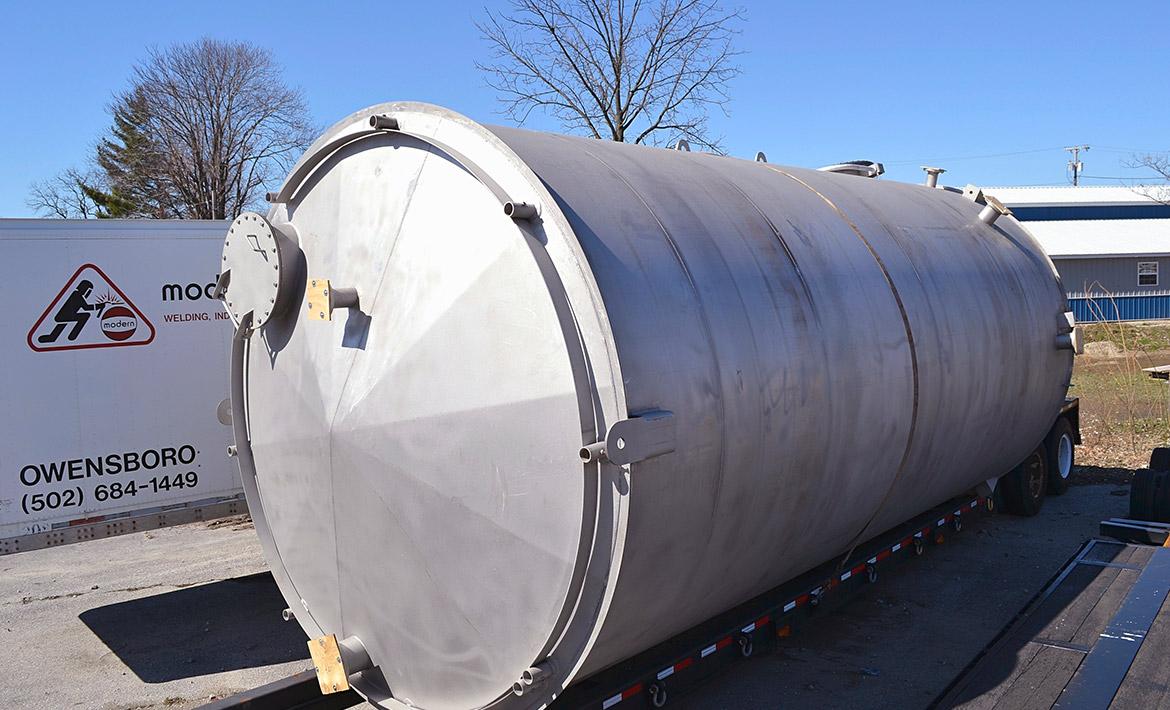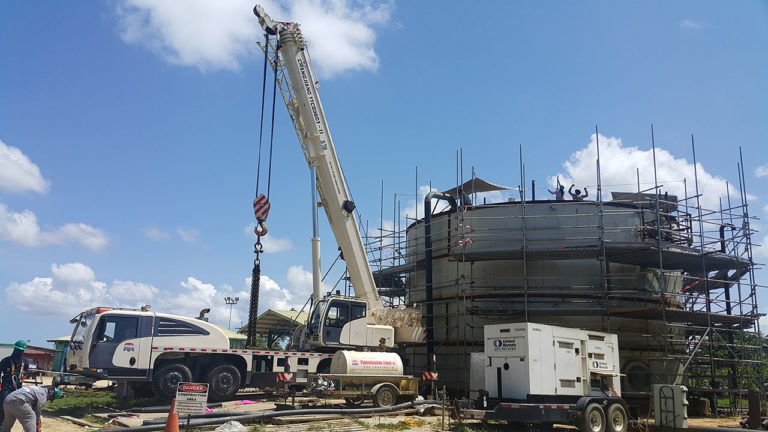The Future of API 650 Welding Inspection with Advanced Inspection Systems Integration
Wiki Article
Exactly How Welding Examination Functions: A Comprehensive Guide for Professionals
Welding inspection plays an important role in guaranteeing the safety and security and integrity of bonded structures. It involves a methodical approach that consists of both aesthetic examination and advanced testing approaches. Experts need to acquaint themselves with crucial requirements and laws governing the industry. Recognizing the common defects that can develop throughout welding is important. This overview will explore these elements in detail, giving understandings into the processes that copyright top quality and stability in welding.Recognizing the Value of Welding Assessment
While many might underestimate the relevance of welding assessment, it plays a necessary function in making sure the integrity and security of bonded frameworks. Effective welding evaluation identifies potential problems and imperfections that can compromise architectural stamina and cause catastrophic failures. The examination process encompasses numerous strategies, such as aesthetic exams, ultrasonic testing, and radiographic assessments, each adding to the overall evaluation of weld top quality.
Along with securing the architectural honesty, welding assessment ensures compliance with industry standards and client specs. By guaranteeing that welds fulfill required tolerances and attributes, evaluations help preserve the reliability and durability of elements in different applications, from building and construction to aerospace. Furthermore, a rigorous inspection process promotes a society of high quality and liability amongst welders and manufacturers. Ultimately, welding assessment is not merely a step-by-step step; it is an important technique that underpins the safety and security and performance of crafted systems across diverse industries.
Trick Standards and Laws in Welding Inspection
The structure of reliable welding evaluation hinges on adherence to established regulations and requirements. Different organizations, such as the American Welding Society (AWS) and the American National Criteria Institute (ANSI), stated guidelines that guarantee high quality and safety and security in welding methods. Key requirements, such as AWS D1.1 for architectural welding and ASME Section IX for pressure vessels, provide detailed criteria for welding procedures, evaluations, and qualifications. Regulatory structures, including those from the Occupational Safety And Security and Health Administration (OSHA), required security methods and worker defenses in welding atmospheres. Conformity with these requirements is important for accomplishing constant weld high quality and minimizing the danger of failures. In addition, worldwide requirements like ISO 3834 even more boost global consistency in welding inspection practices. Experts must remain informed about these guidelines to assure that their assessment approaches align with industry expectations and lawful demands, therefore safeguarding both workers and architectural honesty.First Preparation and Visual Evaluation Techniques

Reliable welding assessment begins with a thorough pre-inspection list that guarantees all essential conditions are fulfilled before the real examination occurs. Following this preparation, visual defect recognition plays an essential function in evaluating weld top quality, allowing assessors to detect problems such as splits or improper combination. With each other, these techniques create the foundation for a successful welding examination process.
Pre-Inspection List
Prior to commencing any type of welding inspection, a complete pre-inspection checklist is vital to assure that all necessary preparations are completed and that aesthetic inspection methods are efficiently employed. Key aspects of this list consist of confirming the welding treatment requirements (WPS), making certain all equipment is calibrated and in great functioning problem, and validating that the assessor possesses the required certifications. Furthermore, it is crucial to assess any kind of previous inspection reports and to assess the work atmosphere for security risks. The examiner ought to likewise confirm that all appropriate paperwork, such as product certifications and assessment documents, is easily available. Completing this checklist helps to establish a solid foundation for a successful evaluation process, enhancing the reliability of the outcomes acquired.Aesthetic Flaw Recognition
A successful visual flaw recognition procedure begins with mindful preliminary preparation and the application of established aesthetic assessment methods. Assessors must guarantee that the welding location is clean and well-lit, as appropriate visibility is essential for identifying flaws. A complete assessment of the weld joint's surface area permits the identification of stoppages, such as fractures, undercuts, or porosity. Inspectors usually use tools like amplifying glasses or mirrors to boost their view of hard-to-reach locations. Additionally, they need to know with the certain welding standards and standards relevant to the job. By sticking to these techniques, assessors can effectively determine possible issues, securing the integrity of the weld and conformity with industry requirements.Non-Destructive Testing Approaches: A Summary
Non-destructive screening (NDT) approaches play a vital duty in the welding evaluation procedure by making certain the integrity and dependability of bonded structures without creating any type of damage (API 650 Welding Inspection). These strategies permit assessors to assess the quality of welds while preserving the elements being checked out. Common NDT methods include ultrasonic testing, radiographic testing, magnetic bit screening, and color penetrant screening, each offering unique advantagesUltrasonic testing utilizes high-frequency acoustic waves to identify internal defects, while radiographic screening makes use of X-rays or gamma rays to visualize the interior framework of welds. Magnetic particle testing reveals surface area and near-surface problems by using a magnetic field and iron bits to the weld area. Dye penetrant testing highlights surface-breaking imperfections with the application of a colored dye. Together, these NDT techniques give vital understandings right into weld top quality, enabling experts to make informed decisions pertaining to safety and security and conformity in welding applications.
Typical Flaws and Their Effects
Recognizing usual flaws in bonded joints is essential for keeping structural stability and security. Different defects can occur throughout the welding procedure, each bring possible ramifications for the overall performance of the framework. browse around this web-site Porosity, defined by tiny gas pockets within the weld, can damage the joint and jeopardize its load-bearing ability. Splits might develop as a result of thermal stress and anxiety or inappropriate cooling, leading to possible failure under stress. Insufficient combination occurs when the weld steel does not fully bond with the base product, leading to weak joints that may not hold up against desired loads. Damaging, where the base steel is eroded, can also lower the reliable cross-section of the weld. Furthermore, excessive support can produce tension focus that can lead to failure. Recognizing these problems immediately allows for rehabilitative measures, making sure the longevity and reliability of bonded frameworks in important applications.Tools and Devices Made Use Of in Welding Evaluation
Reliable welding inspection relies upon a selection of specialized tools and devices to assure the top quality and integrity of bonded joints. Important tools include aesthetic evaluation devices, such as magnifying borescopes and glasses, which enable inspectors to carefully take a look at welds for surface issues. Non-destructive screening (NDT) methods, such as ultrasonic screening, radiographic screening, and magnetic bit screening, are fundamental for recognizing interior flaws without harming the material.Measurement devices, including calipers and weld gauges, help ascertain and examine measurements conformity with Get More Info requirements. Furthermore, solidity testers review the mechanical properties of welded joints. Personal safety equipment (PPE) is also critical, securing the safety of inspectors while operating in potentially hazardous environments (API 650 Welding Inspection). Each device serves a certain objective, jointly improving the performance of welding examination and contributing to the dependability of completed jobs
Often Asked Concerns
What Qualifications Are Needed to End Up Being a Welding Inspector?
To become a welding assessor, individuals usually need pertinent qualifications, such as AWS CWI or CSWIP, together with experience in welding processes, design principles, and knowledge of examination strategies, security standards, and relevant codes.Exactly How Typically Should Welding Inspections Be Conducted?
Welding evaluations need to be carried out frequently, ideally at numerous job stages, consisting of pre-weld, during-weld, and post-weld. Frequency may additionally depend on sector standards, project specifications, and the complexity of the welds involved.Can Welding Defects Be Repaired After Examination?

Yes, welding issues can typically be fixed after inspection. Relying on the seriousness and sort of defect, appropriate methods such as remodeling or added welding might be employed to recover architectural integrity and safety and security compliance.
What Industries Require Routine Welding Assessments?

Numerous sectors, including building, manufacturing, aerospace, and automobile, call for normal welding examinations - API 650 Welding Inspection. These examinations guarantee adherence to safety and security criteria and quality assurance, decreasing threats associated with architectural stability and functional efficiency in bonded parts
Just how Do I Pick a Welding Evaluation Solution?
To choose a welding assessment service, one important site ought to consider certifications, experience, certifications, and market reputation. Additionally, assessing client reviews and assuring the service fulfills relevant requirements can help guarantee top quality examinations and trusted outcomes.
While many might ignore the value of welding assessment, it plays an important duty in guaranteeing the honesty and security of bonded structures. Secret standards, such as AWS D1.1 for structural welding and ASME Area IX for pressure vessels, supply thorough requirements for welding certifications, assessments, and treatments. Efficient welding inspection begins with a thorough pre-inspection checklist that guarantees all required problems are met before the actual evaluation takes location. Before beginning any kind of welding examination, a comprehensive pre-inspection checklist is vital to ensure that all needed prep work are finished and that visual assessment methods are successfully used. Non-destructive screening (NDT) approaches play a crucial duty in the welding inspection procedure by making certain the integrity and integrity of bonded frameworks without creating any damage.
Report this wiki page